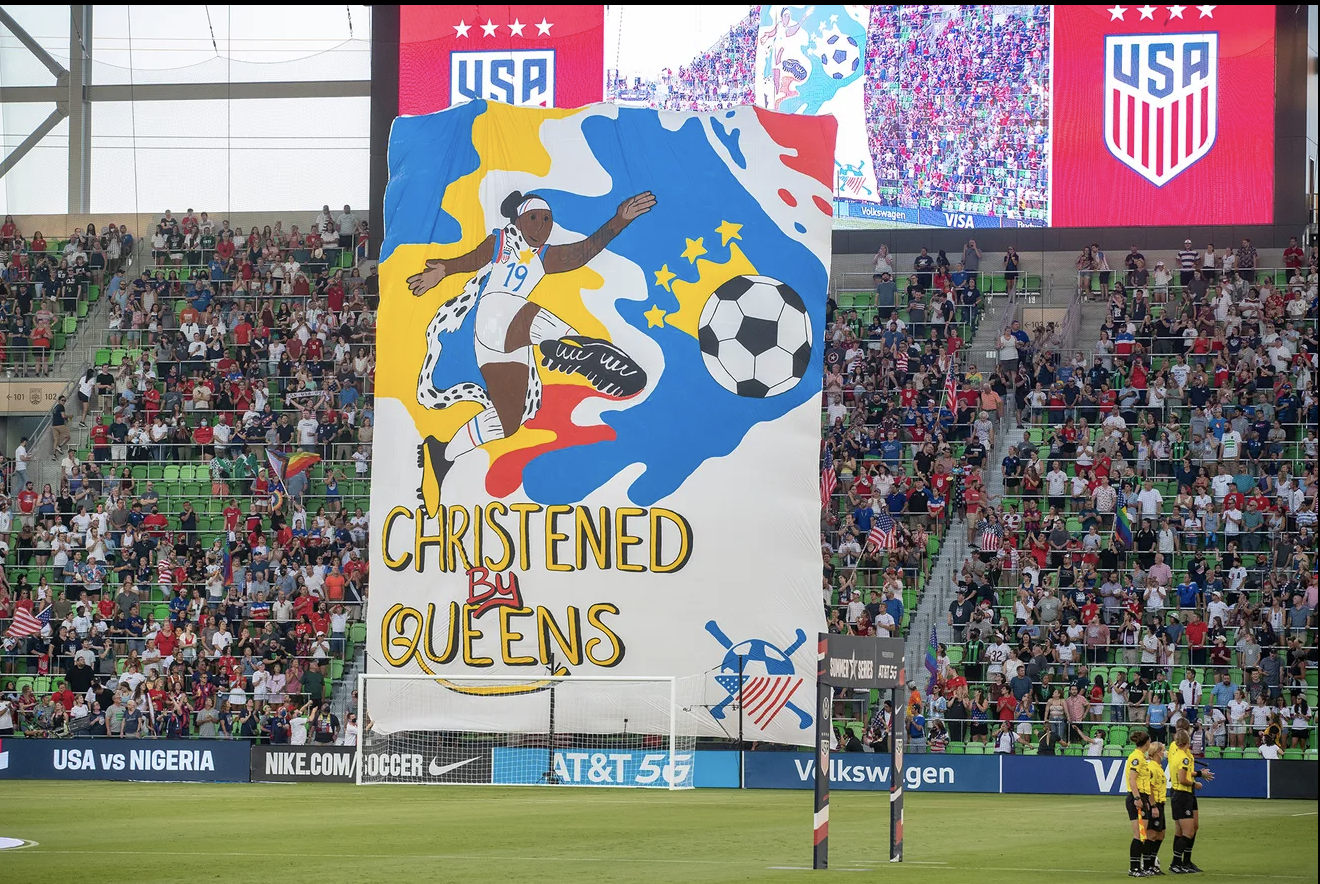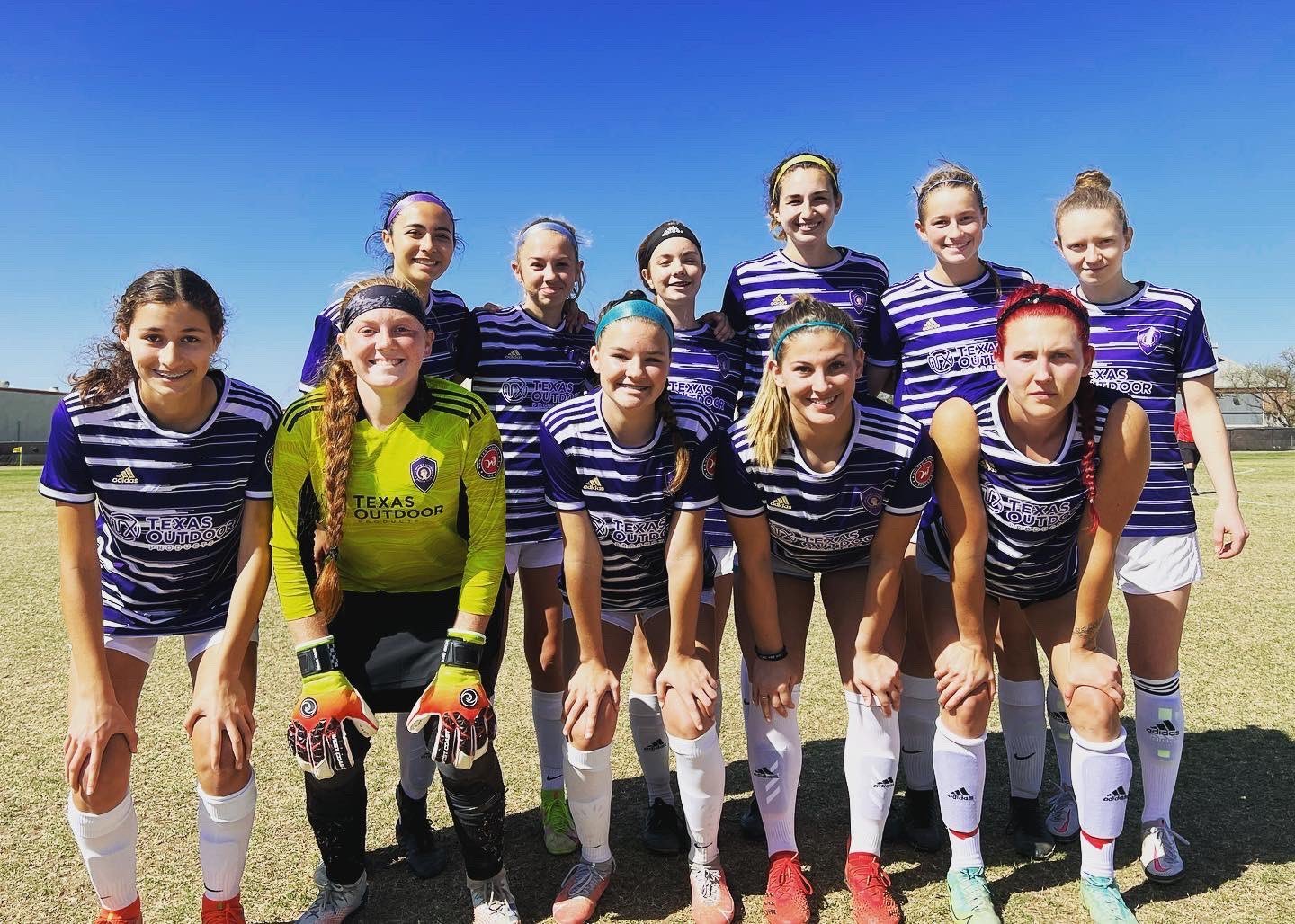The Landscape: Women's Soccer in Texas
Over the next few days, in an effort to familiarize our readers with some key women’s soccer landscapes in the US, we’ll be highlighting 4 different regions in the country that are not only developing today’s and tomorrow’s biggest talents, but are quickly setting the tone for what the future of women’s soccer can look like. These regions are: Texas, California, New York/New Jersey, and Minnesota.
Obviously, our list is not exhaustive. These four regions aren’t the only hotbeds for talent, but they’re ones we’re most excited about here at Protagonist Soccer and also, most curious about. We encourage you to consider your own region’s women’s soccer environments. What teams play there, what leagues? What does your pipeline for local talent look like, what is special about it, and what are ways it could be improved? What are ways you as a fan can engage and get involved? And ultimately, if you find you’re passionate about your region’s women’s soccer scene and maybe want to help us cover it here at Protagonist Soccer, we encourage you to reach out to us to let us know.
And with that, we start this series in the Lone Star State, Texas.
Texas currently only has ONE division one professional women’s soccer team.
Let that sink in for a moment. A state with a GDP of $2 trillion dollars, “larger than Canada and South Korea and right behind Brazil,” has only one professional woman’s soccer team, Houston Dash.
According to WorldPopulationreview.com:
“In 2022, Texas had 3 of the top 10 cities by population of incorporated places…Texas also has the distinction of having the largest number of the fastest-growing cities with a total of six out of the top 13. Also, half of the top ten cities with the largest population gains were located in Texas… Aside from Houston, a number of other cities in Texas are highly populous. Dallas and San Antonio each have populations of more than a million, while Fort Worth, Austin, and El Paso each have well over 500,000 residents. Fort Worth also had the highest growth rate of the cities in Texas at 2.34%.”
Texas can support more professional women’s soccer and is positionally ready for it. It has the population, a history of strong men’s and women’s college teams, plenty of venues, a strong youth pipeline, and plenty of potential corporations in the tech and banking world to invest. Additionally, Texas currently has 24 women’s semi-pro teams in WPSL, UWS, and UPSL-W with 10 ECNL teams, 6 GA teams, with 50 ECRL teams at the time of writing this. Pipelines of girls’ youth soccer at top levels shows that Texas has the foundation of players and fans. This doesn’t include the young women who play in other leagues and high school across the state.
Texas will serve as host to TWO men’s World Cup 2026 cities, Dallas and Houston. Patterns show that there is always a boom in soccer participation after a World Cup, men’s and women’s. Kids are inspired to play after discovering new heroes on TV, adults dust off their old cleats and find adult leagues to play, and all ages turn to their local community soccer teams to watch more of the sport in person. If the USWNT continues their consistent domination in the summer of 2023, there will be another spike undoubtedly. Current US Soccer President, Cindy Parlow Cone, has shared that they plan on bidding for another Women’s World Cup in 2027 or 2031. Investors should capitalize on this visibility to snatch up a franchise while they are still available and priced right and ultimately, a long-term strategic vision will pay dividends for smart Texas franchises.
Let’s look at a few specific regions in Texas that have proven pipelines and pre-existing soccer communities that can and have supported women’s soccer.
Houston, Texas
Many look at the Houston Dash as an example of what women’s soccer is for the rest of the state. Historically, it has not been impressive, operating as an expansion side since 2014. In 2014, it was expected that expansion teams would have a slow start with an on ramp to growth of several years. Moving in the right direction, in 2022, the Houston Dash hired Jessica O’Neill as their first president and Alex Singer as the first GM, departing from precedence of having the Dynamo and Dash share those executive staff members. Under O’Neill’s leadership, the Dash set an attendance record of 21, 284 fans on October 16, 2022. A playoff match, it was the first Dash sellout at PNC stadium, per HDFC. The proof is there that when you invest in and market women’s soccer properly, people will support it.
On the lower league side, Houston has 3 teams that call it home: AHFC Royals, Houston Aces (partnered with Houston Dash), and Challenge Red Devils all play in the WPSL’s Red River Conference (Southern Division). Currently, no other semi-professional women’s league has a presence in the city but there’s plenty of room for more to come in.
Austin, Texas
USA soccer fans sale out Q2 Stadium to watch USA against Nigeria during the Summer series on Wednesday, June 16, 2021 at Q2 stadium. USA won 2-0
Ricardo B. Brazziell/American-Statesman
On June 16, 2021 Austin’s Q2 Stadium hosted a USWNT game to resounding reception with one of the biggest and best TIFOs ever seen at a women’s national team game in a long while. Christen Press made history when she scored the stadium’s first goal. Austin certainly sets the tone for what an environment at a women’s professional soccer game (outside of Portland or one of the new California NWSL teams) should and can be. Austin FC’s supporters have created a packed and rowdy atmosphere for soccer and outside of game days, they also align with NWSL fans as they support rights for transgender, LGBTQIA+, and reproduction autonomy.
Austin has a pipeline of local talent that could be swayed to stay locally and play professionally. Big 12 powerhouse the University of Texas Longhorns is nestled downtown and regularly churns out some of the world’s best talent including most recently, Julia Grosso, who scored the title-winning penalty kick in the Olympic Gold medal match for Canada against Sweden. Lonestar Soccer Club is a destination for young women, attracting players from hours away. Initially part of the US Soccer Development Academy, they are now affiliated with the Girls Academy and have a WPSL team as well.
FC Austin Rise is the area’s newest lower league team, and will be competing in the WPSL this summer. Owned and managed entirely by women, they pledge to be a team that reflects the community’s young and vibrant energy while also giving back by hosting regular community soccer clinics. Austin, like Houston, has plenty of room for more semi-professional teams (and typically, has a few more teams that play here but are at the moment on a hiatus).
San Antonio, Texas
San Antonio FC seems on the precipice of introducing women’s soccer into their realm and have all the elements needed to make a team of any level successful. However, they have yet to take that next step.
They are the primary residents of an 8,000+ seat stadium, leased from the county, with potential to expand and add a second tier for additional seating. The women’s team would be secondary tenants, but with a 12-field complex adjacent to the stadium, there’s plenty of room for the club to also field a successful women’s team.
But SAFC wouldn’t bring in the first women’s team into the city. There are plenty of other already established clubs in the area for SAFC to play against. And San Antonio shows up for those teams.
More than 3,000 fans came out to see the UWS’ San Antonio Athenians in their inaugural season match against Liga MX Femenil’s C.F. Pachuca. Additionally, San Antonio Blossoms, SA Corinthians FC, and San Antonio Surf all play in the WPSL and make up a fairly competitive conference. With more than 7 colleges with women’s teams in the area, more than 13 competitive youth clubs, an ECNL club, supporters groups who support both SAFC and the local semi-pro teams, and a city hungry for even more, NWSL or even USL Super League could find success in San Antonio.
Dallas, Texas
FC Dallas’ Reyna Reyes was chosen fifth overall in the 2022 NWSL Draft by the Portland Thorns.
With the strength of the women’s youth soccer scene in Dallas, it’s surprising that USSF never pushed for an NWSL team in the region. FC Dallas’ academies attract talent from all across the world and in 2019, Dallas-Fort Worth’s Solar SC reported that they had developed “a total of 13 players, including Taylor Smith’s call up to the full women’s national team.” Two up and coming household names for NWSL fans are Jaedyn Shaw and Reyna Reyes. An alumna of Solar SC and US Soccer’s 2022 Young Female Player of the Year, Shaw signed with San Diego Wave after deciding on skipping college to play professionally and is a regular starter for the US U-20 YNT. Reyna Reyes, an FC Dallas (WPSL) product, was drafted fifth overall during the 2022 NWSL Draft by the Portland Thorns.
In addition to the WPSL’s Solar SC and FC Dallas, Dallas also hosts a few other lower league teams: Luxoria FC in the UWS, and SouthStar FC in the WPSL.
In Conclusion
Typically, professional leagues love regional competition. It helps to minimize the cost of travel for the teams, helps with traveling fans, and generates a buzz as all derbies do. Texas has the capacity to add another NWSL team, preferably in either Dallas or Austin, but San Antonio would also be an excellent choice. The additional team would create a nice anchor for the central region with the Houston Dash, Kansas City Current and Chicago Red Stars, and would benefit from a state that’s rich in talent similarly to how Angel City FC does in Los Angeles.
Ideally, USL Super League teams would find established footing in either El Paso, San Antonio, Fort Worth, or in the Rio Grande Valley. It would then allow a southwest region of New Mexico United, Phoenix Rising, and Colorado Switchbacks to also bring in women’s sides for ease of travel, double headers with the men’s teams, and regional rivalries. With USL being established in most of these areas, the rivalries have heated up and supporters are there in full support. And if the Super League specifically doesn’t come to Texas, it’s easy to imagine the state becoming the USL W League’s next expansion region in the next 1-2 years.
But which pre-existing Texas USL or MLS club will take the first step and bet on women’s soccer to reap the reward? Which one will be the first to bring in a USL W League team or the second in the state to bring in an NWSL team? The Wall Street Journal currently estimates NWSL expansion fees to be somewhere near $50 million. Waiting any longer to bring in an NWSL expansion side will see that fee increase at a similar rate as USL Championship and MLS expansion fees have in prior years. USL W League expansion fees could similarly increase in the future (currently the fee is rumored to be about $30 thousand). From an investment point of view, the time is now to capitalize on the market of women’s soccer in Texas, especially with a men’s World Cup coming in 2026 and potentially a women’s soon after.
-Danielle Gawronski



